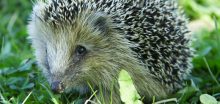For R2103 you need two named examples of the following types of weed:
Ephemeral – Senecio vulgaris – Groundsel; Cardamine hirsuta – hairy bittercress
Annual – Chenopodium album – Fat Hen; Galium aparine – Goosegrass
Perennial – Aegopodium podagraria – ground elder; Cirsium arvense – creeping thistle.
You also need to know two weed examples of each of the following situations:
Newly cultivated soil – ephemeral and annual weeds, e.g. Stellaria media and Cardamine hirsuta. The seeds of these weeds are often already in the soil and begin to germinate once exposed to light during cultivation.
Herbaceous perennial borders – ephemerals and annuals can arise, but sometimes perennials, such as, Aegeopodium podagraria and Galium aparine.
Woody perennial planting – the soil may be infrequently cultivated so perennials like brambles, Rubus fruticosus, and Bindweed, Calystegia sepium, may become established.
Lawns – 1. lesser celandine (Ranunculus ficaria): Returf small areas containing celandine. Plants need two or three applications of weedkillers containing MCPA.
2. Slender speedwell (Veronica filiformis): Little response to lawn weedkillers. Re-seed or returf affected areas of lawn.
This page is part of our 6-week RHS revision email series. If you’re currently revising for exams, join our list to ensure you don’t miss any new material or updates.

